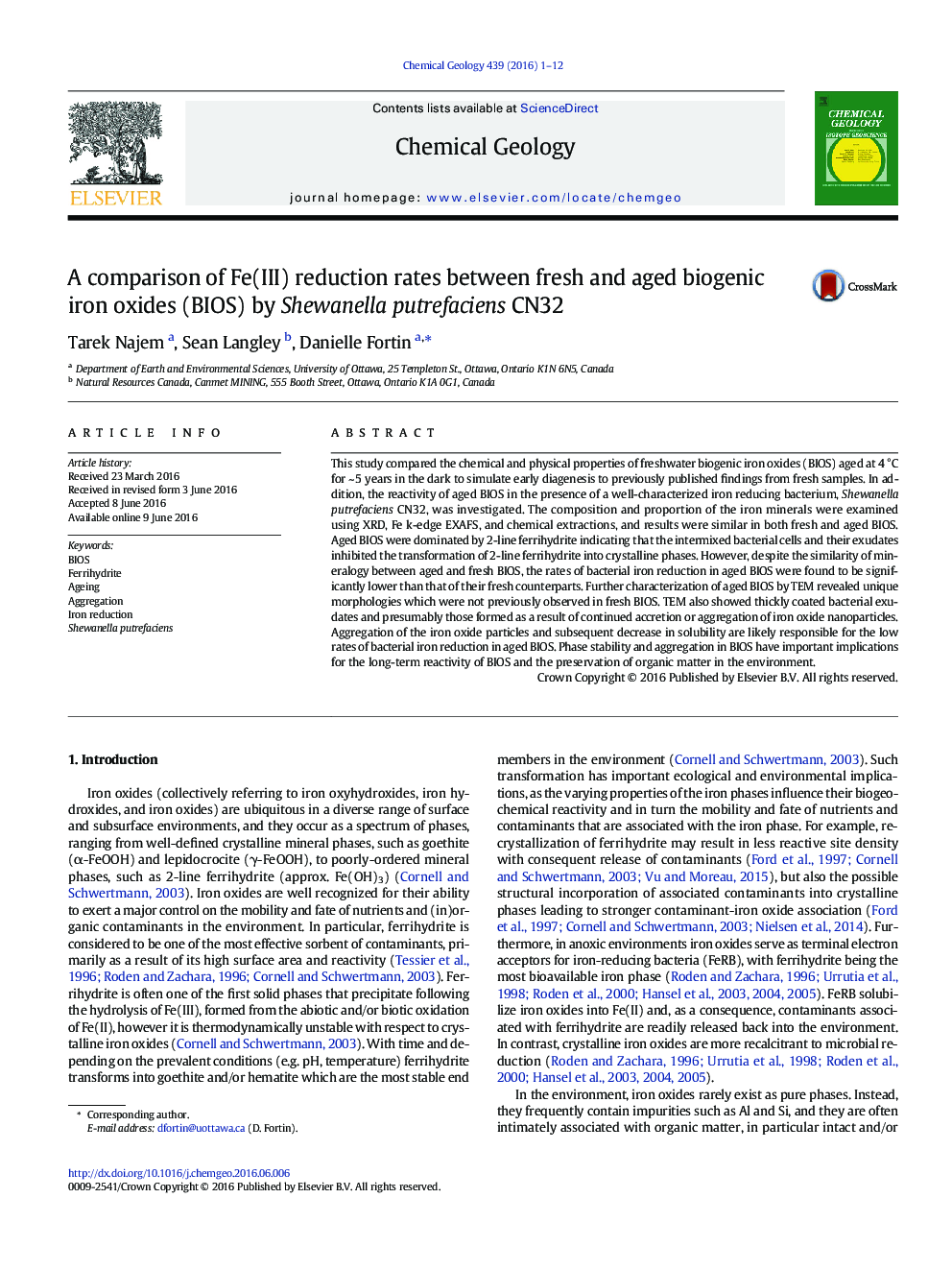| کد مقاله | کد نشریه | سال انتشار | مقاله انگلیسی | نسخه تمام متن |
|---|---|---|---|---|
| 4698252 | 1637535 | 2016 | 12 صفحه PDF | دانلود رایگان |

• Ageing of BIOS for ~ 5 years at 4°C did not influence the composition or proportion of Fe-bearing minerals within BIOS.
• Bacterial cells and their polymers likely stabilized 2-line ferrihydrite against transformation.
• The rates of microbial Fe(III) reduction of aged BIOS were significantly lower than that of fresh BIOS.
• TEM of aged BIOS revealed aggregation of ferrihydrite nanoparticles and possible development of crystallinity.
This study compared the chemical and physical properties of freshwater biogenic iron oxides (BIOS) aged at 4 °C for ~ 5 years in the dark to simulate early diagenesis to previously published findings from fresh samples. In addition, the reactivity of aged BIOS in the presence of a well-characterized iron reducing bacterium, Shewanella putrefaciens CN32, was investigated. The composition and proportion of the iron minerals were examined using XRD, Fe k-edge EXAFS, and chemical extractions, and results were similar in both fresh and aged BIOS. Aged BIOS were dominated by 2-line ferrihydrite indicating that the intermixed bacterial cells and their exudates inhibited the transformation of 2-line ferrihydrite into crystalline phases. However, despite the similarity of mineralogy between aged and fresh BIOS, the rates of bacterial iron reduction in aged BIOS were found to be significantly lower than that of their fresh counterparts. Further characterization of aged BIOS by TEM revealed unique morphologies which were not previously observed in fresh BIOS. TEM also showed thickly coated bacterial exudates and presumably those formed as a result of continued accretion or aggregation of iron oxide nanoparticles. Aggregation of the iron oxide particles and subsequent decrease in solubility are likely responsible for the low rates of bacterial iron reduction in aged BIOS. Phase stability and aggregation in BIOS have important implications for the long-term reactivity of BIOS and the preservation of organic matter in the environment.
Journal: Chemical Geology - Volume 439, 7 November 2016, Pages 1–12